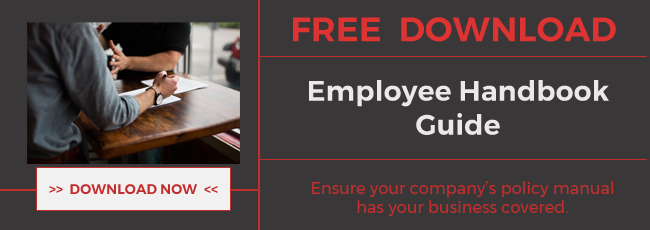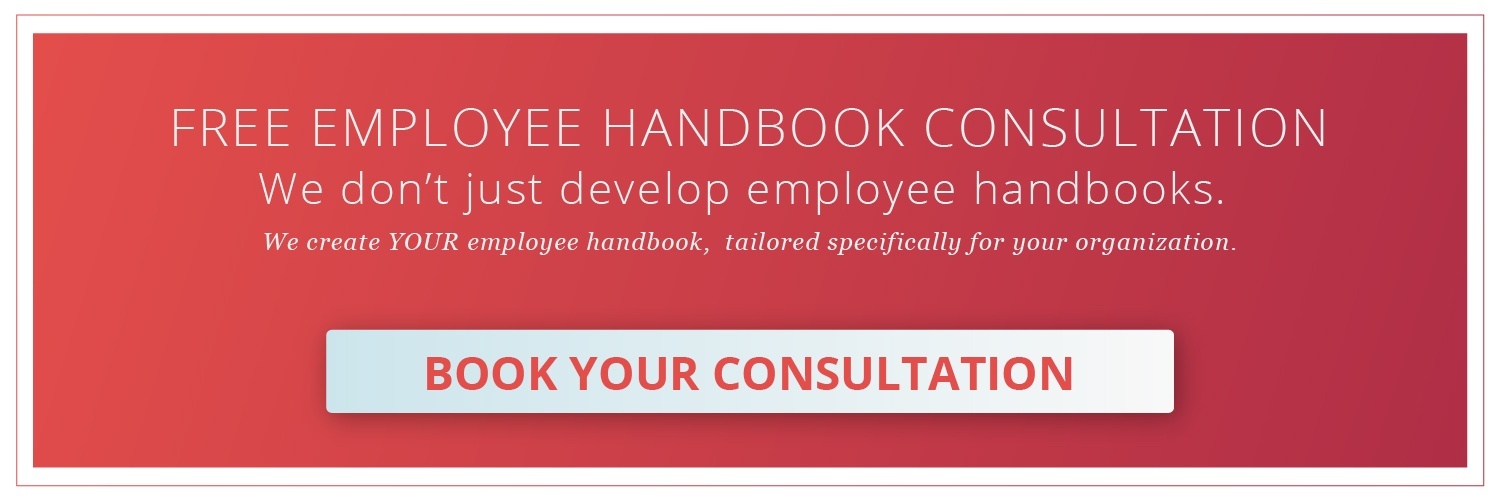No business wants to be subject to an employee lawsuit, but the odds are good that any business will be at some point. The question is whether they'll be prepared when it does happen.

[This post was previously published in June 2018. It has been updated and revised to provide the most up-to-date information.]
When it comes to thinking about employee lawsuits there are two major actions that need to be taken: prevention and preparation.
Prevention is largely an integrated effort of building and fostering a company culture and management structure that minimizes triggers for employee claims. Preparation is largely an HR task that can be integrated into standard management practices.
Employee Lawsuits: Why They Happen
There are a number of reasons why employees, or recent former employees, seek to make claims against employers. But the most common reasons fall under the categories of wrongful termination and discrimination and harassment.
How common are employee claims in California?
According to the Equal Employment Opportunity Commission (EEOC), the federal agency tasked with enforcing certain employment laws, Californians filed 2,752 retaliation charges in 2017. That represents half of all charges filed. The majority of these retaliation charge were based on Title VII of the Civil Rights Act, which means that they were based on some type of discrimination, such as age, disability or national origin.
Discrimination based on race was the next common type of charge, with 1,811 charges filed. After this, sex-based discrimination was the next most common with 1,500 charges filed, followed by national origin, religion and color.
Making matters worse for California employers, precedent and case history has shown that the state's own legal structure tends to favor workers and has been particularly hard on employers.
According to the Hiscox USA annual report for 2017, US companies had at least a 10.5% chance of having an employment charge filed against them. Of these, California was in the top five states with a significantly higher risk of employee lawsuits than the national average.
They were:
- Washington DC (+81%)
- Delaware (+55%)
- Nevada (+55%)
- New Mexico (+50%)
- California (+46%)
In addition, on a state level, the Department of Fair Employment and Housing (DFEH) is the agency tasked with investigating employee workplace discrimination complaints based on race, color, ancestry, religion, age (40 and over), disability, medical condition, genetic information, sex (including pregnancy), sexual orientation, marital status, military and veteran status, or national origin.
According to the DFEH, in their 2018 Annual Report, the number of complaints received by DFEH grew to 27,840 complaints received in 2018, an increase of 3,061 complaints over calendar year 2017.
The report provided these case processing highlights:
- 27,840 Complaints received
- 20,822 Complaints filed (includes complaints initiating a DFEH investigation and those initiating the possibility of a private lawsuit through the Right-to-Sue process in employment claims)
Of these, 14,772 complaints filed to request an immediate Right-to-Sue notice and 5,395 complaints were accepted for investigation by the DFEH.
There were 792 cases settled for which the DFEH facilitated resolution with a monetary value of settlements totaling $13,683,921.04 for 2018. Of the cases litigated where the DFEH filed a complaint in civil court, 29 cases were filed in court on behalf of 48 individually named complainants.
Unfortunately, many of these employee charges, claims and lawsuits could have been prevented or mitigated with proper management practices and policies.
Employee Charge Prevention Practices
Here are some best practices for HR management and organizations for minimizing and preventing the occurrence of employee complaints.
- Know the Law
Recruiting and hiring laws and regulations are just as critical as ongoing employment labor laws. It is the responsibility of the HR management and others directly involved with recruiting, hiring, training and supervising employees to be clear and up-t-date on both federal and state employment laws.
It is said that knowledge is power and, in the case of employee claims, knowledge of the law is the power to prevent claims.
- Be Insured
Be clear as to your organization's exposure to risk and maintain a comprehensive commercial liability insurance policy. Not only does it take almost a year on average for an average claim to be resolved, almost a quarter of claims result in legal and settlement costs.
In fact, the average cost for cases that resulted in a defense and settlement payment is $160,000, according to Hiscox.
- Define Job Descriptions
Misunderstandings and miscommunication of required work, expectations, performance standards, and so on can often lead to a claim from an employee. This can be largely mitigated with a comprehensive position agreement that documents responsibilities, management hierarchy, acceptable practices, and other job information vital to clearly define what’s expected of the employee each day.
A well-written, comprehensive job description both the employee and employer to be clear before and after the candidate is brought on board.
- Document Policies & Actions
Having a compliant and comprehensive employee handbook is essential. And so is the practice of maintaining detailed employee records. Policies regarding disciplinary actions and termination must be in writing and available to each employee.
If a manager files a report when an employee is reprimanded or rewarded, this should be documented. If job descriptions are updated or revised, it needs to be in writing. When it comes to employer-employee relations and interactions, the more documentation the better.
Best Practices for Personnel Files
One of the first things that are requested in the event of an employee charge is the employee's personnel files. These files, along with a comprehensive employee handbook, are your best defenses.
The following tips, drawn in part from information at Business Management Daily, will help in keeping your personnel files accurate, safe and complete.
- File Organization
When setting up and organizing personnel files for an employee any medical information should be kept in a separate file from their personnel file.
Items considered personnel records are those kept by an employer about an employee's qualifications for employment, promotion, transfer, additional compensation or disciplinary actions. Also, an employee's personnel record cannot include personal information for another person.
An employee's medical information would include medical certifications, doctor's notes, requests for family or medical leave, results of medical exams, and related items. All medical files should be kept in a locked and secure location with access limited to managers with a legitimate business need.
In addition, a good practice is to keep an employee's I-9 and EEO-1 documentation should be kept separate from the personnel files. Although this is not a legal requirement, in the event of an government agency audit, this can limit their access to personal employee information. Not only that, but it will make it easier for you to extract the information when the government asks for it.
Keep in mind that there are no laws requiring that you keep personnel files. However, there may be federal, state and industry-specific laws that require certain types of documentation to be retained for your business.
- Records Retention
There are some laws that require that certain records be kept for specific periods of time. However, despite the temptation to keep "everything" indefinitely, it's safer and more efficient to only keep what you are legally required to. Not only to physical records take up space, but the more you have on-site, the more information you have at risk in the instance of a security breach.
However, you need to be certain of what is required as disposing of some records too soon could result in non-compliance.In addition, should an employee make a charge, you may need them to defend against claims in court, or to comply with a court order or agency investigation.
Because federal and state statutes typically dictate record-keeping retention requirements, it is best to seek additional assistance such as the EEOC or SHRM for guidelines and other resources.
- Relinquishing Records
Certain states have laws that allow employees to access their personnel records. However, this does not necessarily mean you are required to hand over everything. In these instances, an employee is usually allowed to view their file on the company premises and to make copies of documents. Remember that these documents are essentially the property of the organization, not the employee.
If a particular state does not have a law, or the existing law does not include former employees, the employer has the discretion of whether to give the employee, or ex-employee, access.
Typically, government agencies cannot access personnel records without some type of consent. In California, for example, a recent law was passed to place parameters on accessibility to employment records by the U.S. Immigration and Customs Enforcement (ICE) agency. In those instances where the immigration agency is preforming an audit, employers can ask federal agents for subpoenas before handing over employee personnel records, primarily I-9 Employment Eligibility Verification forms.
Your Partner for HR Management
Accurate and timely management and HR compliance practices are required for HR professionals in every business. Managing all of this can be challenging, but you do have options.
Accuchex is a reputable workforce management services provider and can not only assist you with the burden of your ongoing compliance demands, but can potentially prove to be a more cost-effective solution, as well.
Click the button below to learn what you need to know about labor law in California. For more immediate information, feel free to call Accuchex Payroll Management Services at 877-422-2824.






